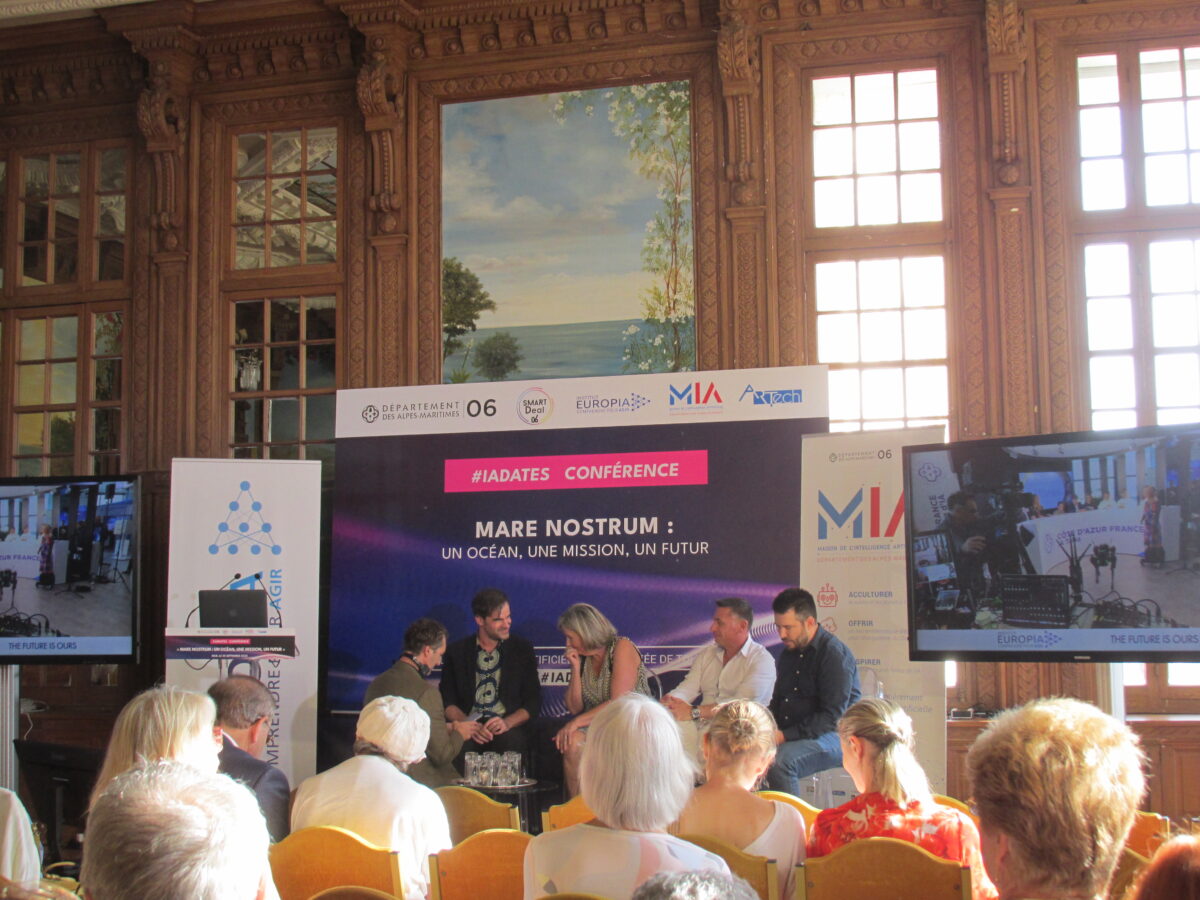At the Palais des Rois Sardes, this Saturday, September 30, as part of the IADates, the Mare Nostrum project was at the heart of the discussion.
At the origin of this project is the desire to raise public awareness about the challenges of ecology and the future of the planet. It all begins in 2022 when Diana Landi, president of Art Tech, organizes a triple event related to the “World Days of the Sea and Ocean.” Thus, in December 2022, a half-day is entirely dedicated to ecological awareness and information about the “Mare Nostrum” project. A few months later, in February, ” Mare Nostrum ” participates in the World AI Festival Cannes. The aim is to highlight projects and research that integrate artificial intelligence and art with ecology. Finally, in June 2023, the project is presented at an artistic and scientific event connected with World Ocean Day.
The project revolves around different artistic creations linked to artificial intelligence. Jérémy Gobé is a visual artist who uses AI and digital technologies in his creations. He is particularly interested in the preservation of corals. Sofia Crespo is an artist who works with technologies inspired by biology. She questions the processes of organic life and also our relationship with technology. These two artists are thus at the origin of the immersive experience “Mare Nostrum.” This immersive experience invites the spectator to dive into the issue of underwater plastic pollution.
Finally, Diana Landi emphasized that, although the project initially focused solely on the Mediterranean, it quickly gained international ambition. Indeed, the preservation of the Mediterranean can only be achieved in connection with global awareness of the marine environment.

What is the state of our oceans?
“Plastic travels“, reminds Maria Luiza Pedrotti, a researcher at CNRS and the Laboratory of Oceanography of Villefranche. The plastic that proliferates in the ocean is 80% from terrestrial origin and 20% from maritime activities. Maria Luiza Pedrotti points out that the most prevalent plastic in the sea is single-use. Consequently, plastic packaging is undeniably the primary polluter of the seas.
In 2019, there were 460 million tons of plastics in the sea. Due to the annual global production and consumption of plastic, these numbers tend to increase by 4% per year. For Maria Luiza Pedrotti, the problem is not the plastic itself but its usage. Additionally, the Mediterranean Sea is one of the most polluted seas in the world. With 260,000 pieces per square kilometer, its plastic concentration is similar to that found in the “plastic continent.”
The so-called “7th continent” is sadly located halfway between Hawaii and California. Due to various ocean currents, the plastics present in the sea have accumulated in this area. Spanning almost 1.6 million km² in the Pacific Ocean, it covers an area equivalent to three times the size of France.
Finally, this new IA Dates is an opportunity to remind that the city of Nice will host in June 2025 the United Nations Conference on the Oceans: UNOC 2025.


